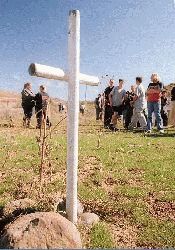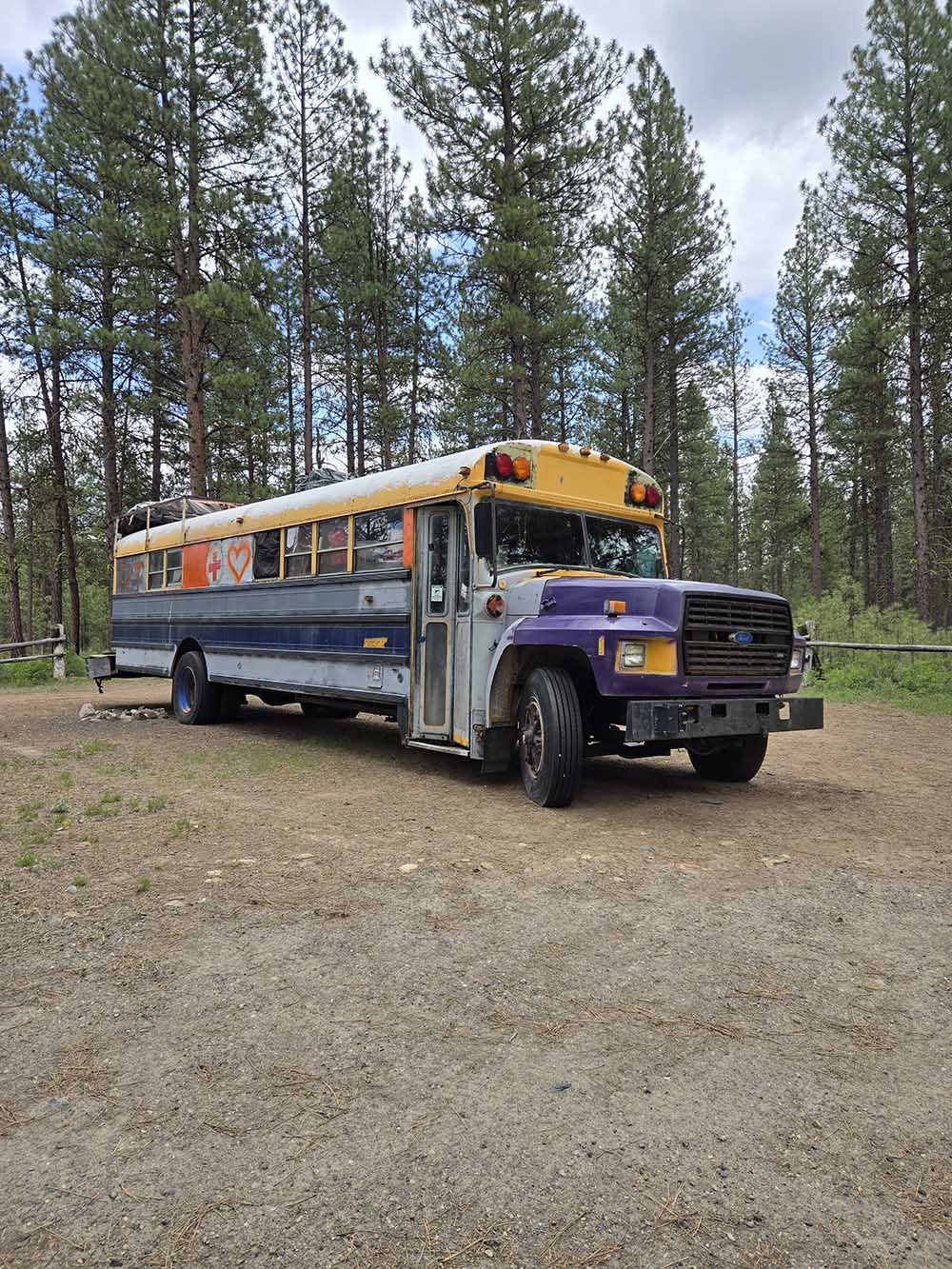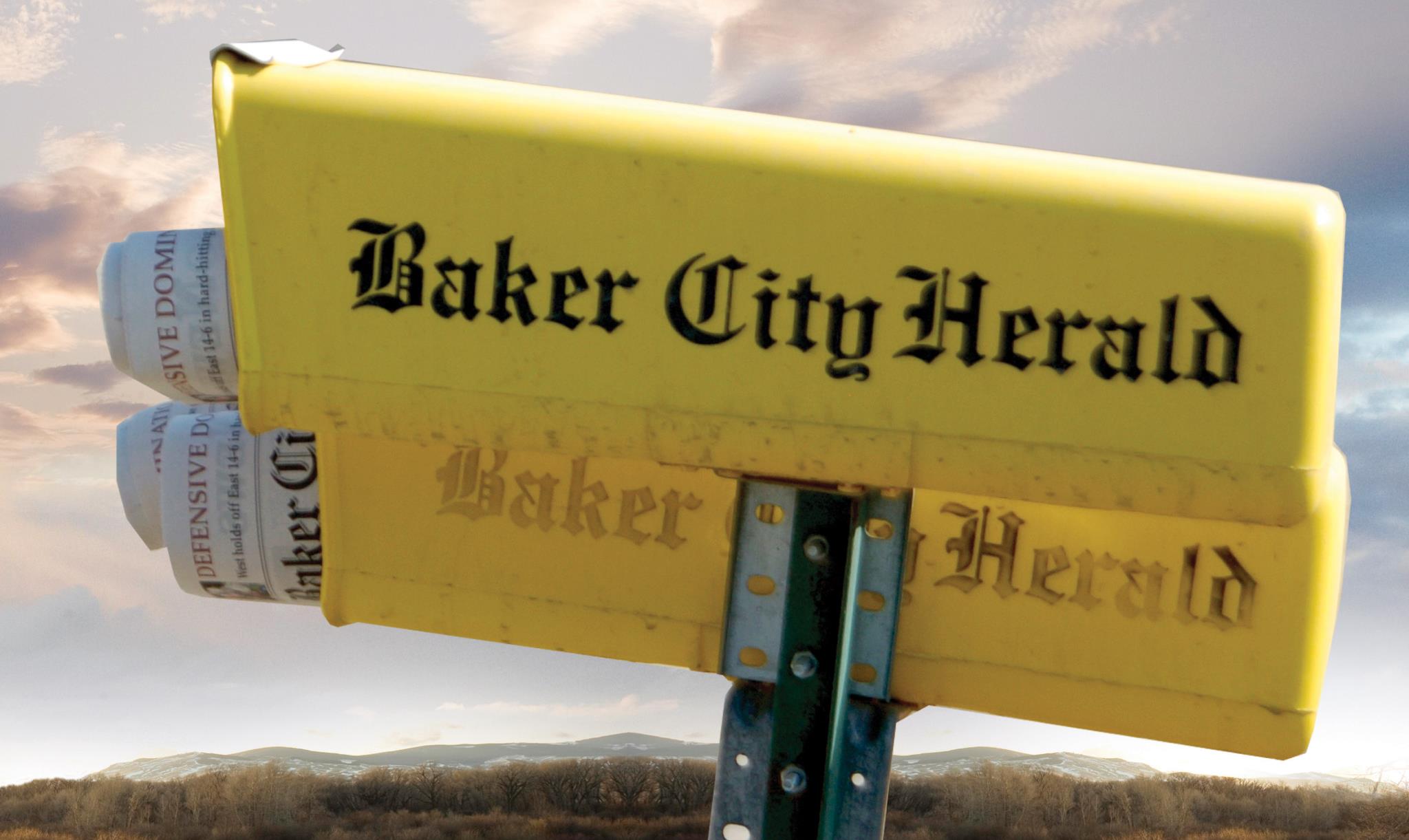Massacre on the Oregon Trail
Published 12:00 am Thursday, March 20, 2003

- Huntington School students visited the site Wednesday of an Oregon Trail massacre, where a lone cross stands as a memorial. (Baker City Herald/S. John Collins).
By LISA BRITTON
Of the Baker City Herald
Donald Shannon has a request.
The historian would like to know who took the time to place fresh flowers at the foot of a white metal cross, located between Huntington and Farewell Bend.
andquot;Who did that?andquot; he asked the small crowd gathered around the cross. andquot;It’s really touching what did they know?andquot;
His curiosity stems from his research: the cross marks the graves of five men and one woman, all members of the Van Ornum party who were massacred in 1860 about three miles from the present town of Huntington.
This event followed the Utter massacre that occurred several months before, which is the topic of Shannon’s book, andquot;The Utter Disaster on the Oregon Trail.andquot;
This book prompted Shannon’s visit to Huntington on Wednesday.
Huntington students have begun researching this part of the area’s history, and Lance Dixon, Huntington principal, wanted to obtain a copy of Shannon’s book as a resource.
However, he was told it was out of print and out of distribution. The publisher instead gave Dixon the author’s phone number.
Shannon offered to do something more than supply books he decided to appear in Huntington and present his information about the relations between the Native Americans and pioneers, which includes a section on the Van Ornum massacre.
Following the presentation, a group of students traveled to the burial site.
Huntington school Superintendent Gerald Hopkins began organizing this project five years ago, and then talked it over with Dixon to decide how the students could be involved.
andquot;I asked, ‘What can we do to promote history for our kids and bring people into the community?andquot; Hopkins said.
To begin the project, he contacted the Oregon Department of Transportation to learn the protocol and cost for placing a historical marker at the sign to memorialize the murdered pioneers.
They have also received grant funds to pay for the marker.
Now the students are researching and visiting with Huntington’s older population to learn more about the area.
andquot;They’ve really gotten into it the last few weeks,andquot; Hopkins said.
During Shannon’s presentation on Wednesday, he began describing what life in the West was like when only Native American tribes lived here, where they hunted and fished for salmon.
In the early 1800s, when emigrants began to venture west, Shannon said at first the Native Americans were hospitable and helpful.
When the Wilson Price Hunt expedition traveled through Weiser, members of the tribe there offered directions to the strangers.
andquot;The Indians showed them they could go over the Blue Mountains,andquot; Shannon said.
The route they took later became the Oregon Trail.
The friendly welcome by the tribes didn’t last long, Shannon said, especially in the country between the Boise Valley and Farewell Bend.
andquot;This area had always been a dangerous place for the unwary traveler,andquot; he said.
This began around 1813, after six trappers made camps near the Boise River.
andquot;The Indians of the area, one by one, picked these six trappers off until there weren’t any left,andquot; Shannon said.
The westward migration along the Oregon Trail was marked by several massacres.
The Utter massacre, which occurred in September 1860, happened in Southwest Idaho in Owyhee County. The wagon train was attacked by Indians. The survivors from this attack moved on along the Oregon Trail, making a camp near present-day Adrian, where they began to starve to death.
Soon several members of the Shoshone tribe came to trade salmon for clothes, which the settlers gladly agreed to.
Then the Native Americans kept coming back, becoming more forceful with their bargaining. Soon they disarmed the pioneers, still giving them salmon in the act of trade.
Weaponless and nearly out of clothing, the Van Ornum family, two surviving Utter boys and a man named Gleason decided to continue on the trail, fearful that next time the Native Americans returned they would be killed. The remaining survivors stayed at the camp to await rescue.
Captain Frederick Dent was the one who found the Van Ornum party in October. Six of them had been mutilated and left near the Oregon Trail.
They were buried where they were found.
The four children were taken by the Native Americans one boy, Reuban Van Ornum, was rescued two years later by his uncle, Zacheus Van Ornum. The other children didn’t survive.
In the mid-1900s, historian P.D. Wood rediscovered the graves after deducing their location through research, planting the white cross that is still there today.
Hopkins said they hope to have the historical marker in place by the end of the year.




